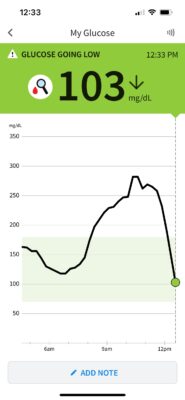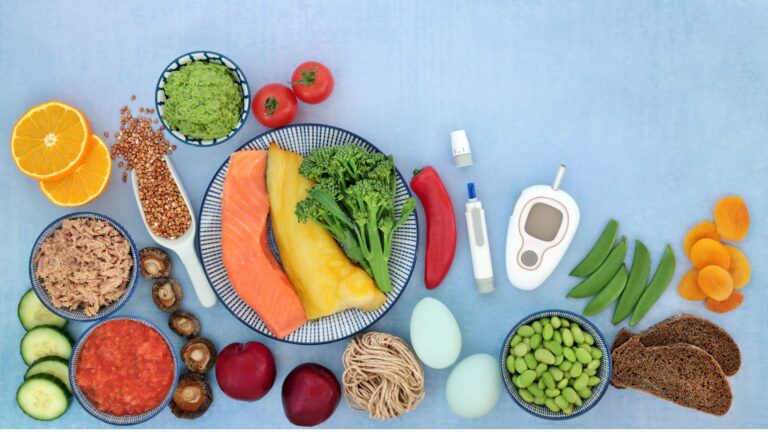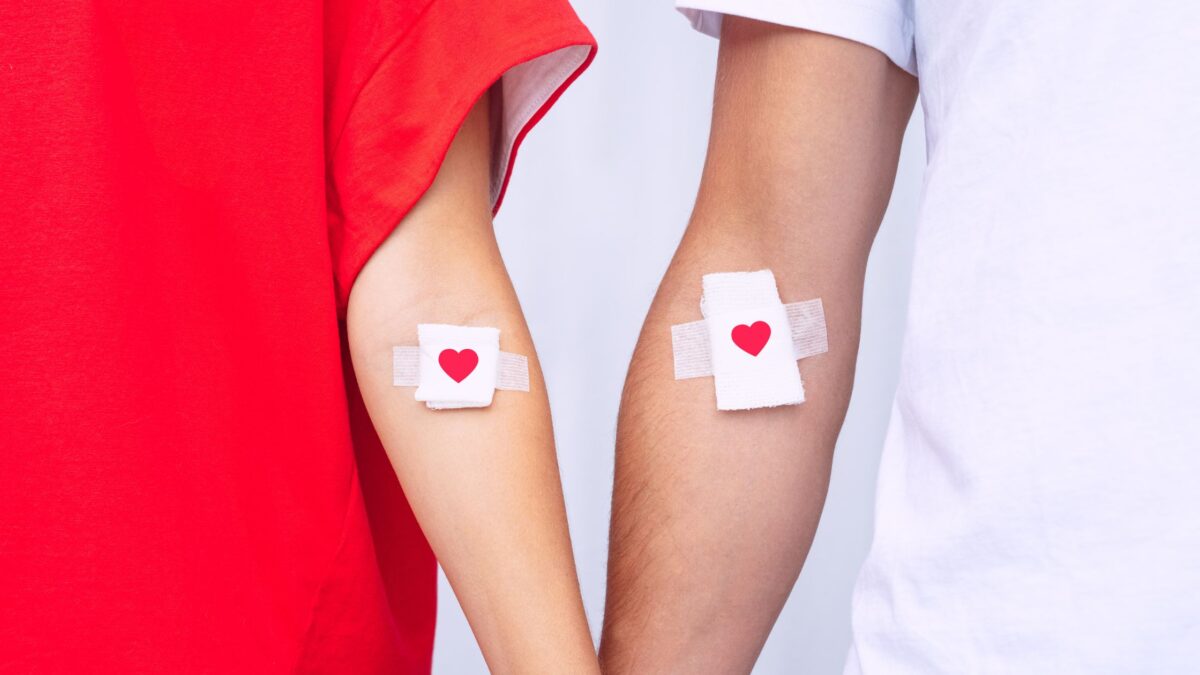Have you checked your blood sugar today? Unless you have diabetes, you probably haven’t checked it since the last time your doctor ordered blood work. I used to hate getting asked this question. For me, the context was a bit different. Checking your blood sugar has to be done constantly when you have type 1 diabetes. Still, no kid wants to do this every time they eat.
It took quite some time to find the appreciation I now have for my diabetes. If I hadn’t lived with this for the last 20 years, I wouldn’t understand why YOUR blood sugar levels matter. And when I tell you they matter, please hear me, friend. Your blood sugar regulation might be the single, most important factor in your overall health.
You need to know this. Your friends need to know this. You especially need to know that it’s a much bigger deal than it’s made out to be. Conventional medicine tends to portray diabetes as ‘just a part of modern life,’ but this is a very dangerous attitude to have. Just because something is common doesn’t mean it’s ‘normal.’
According to the CDC, 1 in 10 people has been diagnosed with diabetes, and 1 in 5 people have it but don’t know it (1). 1 in 3 people have prediabetes, including many adolescents (2). I have a less common form, type 1 – an autoimmune disease where my immune system attacks the cells that make insulin. These staggering statistics are in reference to the entirely preventable and reversible form – type 2 diabetes.
Why Does this Matter to You?
…and what does my entirely different type of disease have to do with your health? It has nothing to do with autoimmunity at all. Instead, it has everything to do with normal human physiology and metabolic function.
I must do many things daily to compensate for the autoimmune part of this disease. I inject 100% of my insulin; I count every carb I eat; I wear a continuous glucose monitor to assess my blood sugar patterns, etc. The crazy part is that I can literally watch the rest of my body develop patterns of type 2 diabetes within a few days if I don’t keep my insulin sensitivity high.
This means there’s actually something far more critical to mine and your blood sugar regulation than blood sugar itself. It’s insulin sensitivity.
Yes, the title is a lie. It’s not blood sugar that’s the single most important health factor. Instead, it’s what’s controlling your blood sugar. That title just sounded more captivating.
That’s not to say your blood sugar doesn’t matter – it does. But if insulin is what’s in charge of managing your blood sugar levels, this is what we should be more focused on. One of the most remarkable things I’ve learned while studying functional medicine is that insulin levels will rise long before your blood sugar is ever impacted. This can happen even several years before you have high blood sugar or HbA1c.
I say it’s the single most important health indicator because with insulin resistance comes myriad other health concerns. High insulin levels and insulin resistance are associated with the following (3):
- High CRP (inflammation) levels
- High triglycerides and LDL cholesterol
- Decreases in HDL cholesterol
- High uric acid
- Increased risk for atherosclerosis (plaque buildup and calcification of the arteries)
- Polycystic ovarian syndrome
- Obesity
- Metabolic syndrome
- Retinopathy
- and high blood pressure.
Its symptoms include:
- Acanthosis nigricans (darkening of armpits and neck)
- Skin tags
- Headaches
- Neuropathy
- Increased thirst and hunger
- Frequent urination
- Slow wound healing
- Increased rates of vaginal yeast infections
Insulin Sensitivity Determines Diabetes Trajectory
Insulin is the hormone that tells your cells to carry the circulating blood glucose (sugar) into your cells. Most of the glucose will be disposed into your liver and muscle cells. The luxuries of modern life create the perfect storm that causes these cells to stop responding to insulin as efficiently, causing the body to have to pump out more and more insulin for them to respond appropriately.
All the while, your blood sugar stays perfectly balanced as the beta cells of your pancreas work to their maximum capacity to ensure glucose enters those cells. You can check your blood sugar all you want during this time, but you’ll never know this is happening.
This is why we must test insulin or C-peptide rather than blood sugar. I test these levels in all of the patients’ labs I run.
I’ve seen patients with perfect fasting glucose levels and an HbA1c of less than 5.5% with over 100uIU/mL insulin levels. This indicates extreme insulin resistance (the cells no longer respond to insulin as they should). However, at this phase, a patient does not ‘qualify’ for a T2D diagnosis according to conventional medical guidelines all because their glucose levels are within range.
This is not good! Once you reach the point of chronically elevated blood sugar levels, this means the beta cell function of the pancreas has started to decrease. Your pancreas can no longer make enough insulin to keep blood sugar in check, and at a certain point, beta cells start to die. It’s very hard to get them back once they’re gone. This is when you become entirely insulin-dependent (like in T1D).
Most people with T2D still produce insulin, and often by providing additional help from drugs like Biguanides, Semaglutides, Sulfonylureas, and other diabetes drugs, beta cell function can be preserved. It is poorly understood why beta cells are so easily destroyed and nearly impossible to regenerate. That’s why it is vitally important that you do everything you can as soon as you can to preserve their function.
Doctors are not taught this, so they are not looking for it. They will not raise a red flag until your fasting glucose has climbed over 100 mg/dL, your HbA1c is between 5.7% and 6.4% for prediabetes, or over 6.4% for T2D. But at this point, too far too much damage has already been done.
The Great News for You
If your blood sugar is within range, but your insulin levels are higher, this is the best time to begin preventing and reversing the trajectory toward T2D. Switching your body from insulin-resistant back to insulin sensitive is relatively easy. It’s much more challenging (though not impossible) once diabetes has set in.
Did I mention your doctor isn’t looking for this? I cannot express enough how important this is. Your doctor is not running these tests and looking for insulin resistance because they are not taught to. YOU have to take control of your health if you want to prevent diseases of affluence like T2D.
Here’s what to do:
Testing: You can take control of your health and test your fasting insulin levels yourself. You can order this lab panel without a doctor’s order or appointment. Make sure you’re fasted for at least 8hr, and drawing blood earlier in the morning is preferred. Ideally, your results should be:
- Glucose: 68-85 mg/dL
- HbA1c: 5.2-5.7%
- Insulin: >17 uIU/mL
Another helpful tool is determining your HOMA insulin resistance score (HOMA-IR). The results can be plugged into an equation to determine your insulin resistance and beta-cell reserve. Some calculators are available online, but it’s recommended that you work with a professional who understands the meaning of the interpretation and knows preventative approaches. Please contact me if you’d like to have me calculate and review your HOMA-IR score.
Preventing Insulin Resistance
This one’s easy. Your body is designed to do this one thing, one thing that humans have done since the dawn of our existence – move.
I know, I know, we live in a stationary world. We’ve created an environment for ourselves where we’re supposed to sit for 8-14 hours of the day (and the rest we’re lying down while we sleep).
This is not what your body is designed to do, though. Never in the existence of our species have we spent so much time sedentary. Movement is so fundamentally important for our health that it should be a non-negotiable part of your daily routine. I know that’s not what many of you wanted to hear, but I’m not here to have feel-good conversations or condone unhealthful habits. I’m here to share the truth and help you be well.
There is nothing more beneficial to insulin and blood sugar metabolism than movement. A recent study had participants do calf raises for 4 hrs daily while seated at their desks. By the end of the study, they noted significant improvements in lipids, blood sugar, HbA1c, and other metabolic markers (4). You can move while you sit.
It’s Not All in the Food
The only way your body is able to efficiently utilize the carbs you eat is to burn them as energy. You will burn some just by being alive and performing normal metabolic processes, but this is significantly fewer than what most people eat. When you exercise, you deplete most of your body’s stored carbs from your muscle and liver. Thus, making room for more to be stored.
If you never clear out the storage sites, there’s nowhere for the additional carbs you eat to go. Insulin resistance is a natural phenomenon. It doesn’t want too many carbs coming in because it can produce oxidative damage when sitting stagnant in tissues. By becoming insulin resistant, your body is trying to protect you from inflammation. Think of this like trying to continuously fill the gas tank of your car when it’s already full. Flammable gas is going to get everywhere.
Insulin resistance is like the venturi pipe that stops gas flowing from the pump to prevent overflowing your tank. But inside your body, the glucose has nowhere else to go except your blood. Since it’s not supposed to be there, your body will force it into the cells anyway by making more insulin. So inflammation is inevitable.
Do you see why I’m driving the point this hard that you HAVE to move if you want to be healthy? You’ve probably noticed throughout this discussion that too many carbs seem to be at the root of the issue as well. And indeed, it is not helping. But we all know this about diabetes.
Yes, you should reduce your carb intake – especially if you’re sedentary. The most important thing to take home, though, is that even with reducing carb/calorie intake, the body will still be unable to store or utilize the carbs you eat without movement.
Please contact me if you’re interested in also working on nutrition for diabetes/diabetes prevention.
How to Move for Insulin Sensitivity
Believe it or not, there are certain specifics that will optimize glucose metabolism in the body, which we’ll cover. At the same time, any movement is better than none.
Resistance training is excellent for maintaining overall insulin sensitivity. When you train your muscles, you actively deplete the glycogen (sugar) stored in your muscle. It boosts insulin sensitivity both acutely and in the long term, as stronger muscles require more glucose for regular metabolic maintenance.
Resistance training is not something you can do for 3-4 months with a trainer to “set yourself up” for the long road. You have to do it routinely. Aim for at least 3 times per week for 45 min-1 hr sessions. It should be hard work, but maintain good form to prevent injury. Please work with a trainer if needed.
Examples of resistance training:
- Routine muscle-building regimen: work arms, chest, back, shoulders, and legs individually on separate days or do push-pull workouts (i.e., back and biceps one day, chest and triceps the next, hamstrings and glutes one day, calves and quads the next).
- Yoga – yes, yoga is an excellent form of resistance training.
- Plyometrics
- HIIT
Zone 2 cardio is a wonderful tool for immediately improving insulin resistance and increasing glucose disposal (into the muscle). Zone 2 cardio is about 40-60% of your max heart rate or a pace where you can talk but not sing. Aim to hit this goal daily. It’s also essential to get your heart rate up high as well, reaching your max heart rate at least once per week. HIIT is an excellent way to do this
Examples of Zone 2 cardio
- Elliptical
- Stair climber
- Treadmill at about 3.5mph.
- Walking outdoors
- Hiking
My Anecdote
I feel so compelled to share this with you because of the patterns I’ve noticed in myself from 2+ years of wearing a CGM. , I know when my body will be most insulin-resistant and insulin-sensitive based on my hormonal cycles. I know when and how much insulin I need around 3 am to prevent insulin resistance when I wake up, and I know how my blood sugar will respond to certain types of carbs. And whey protein makes me acutely insulin resistant.
Like most people, I’ve observed that I’m indeed more insulin resistant in the mornings and more sensitive in the evenings. I’ve also learned that if I skip a day at the gym, I will experience high blood sugar and extreme insulin resistance throughout the day. Often I’ll need double what I would typically take of insulin. But I can prevent this with a 20-30 min brisk walk or 15 min of ‘power yoga.’ Take a look at this screenshot from my CGM below.

The dramatic drop did not begin until the end of working out. This was during a high-hormone phase when I tend to be more insulin resistant. I usually take 6 units of insulin around 3 am, 6 when waking, and 6 at breakfast to prevent it from going high, and I start my workout shortly after breakfast.
This day I had already given myself 20 units around breakfast. Still, as you can see by the steady increase that morning, my body never actually responded to the insulin until the end of my workout. I’m sharing my own personal and private health information with you to illustrate just how vital movement is for diabetes prevention and insulin sensitivity.
I would highly recommend and encourage everyone to use a CGM to find out your blood sugar and insulin resistance patterns. You will need a prescription for one, or there are programs online where you can order them (though they’re far more expensive! I know some MDs who would be happy to help).
The Freestyle Libre is easier to use and much more affordable than the Dexcom ($75 vs. $300+), and I recommend the 14-day because the other options have very disruptive alarms. I have no affiliation with either except that I personally use the Libre 14-day CGM. Most non-diabetics get all the necessary information in only 2 weeks to a month.
Please schedule an appointment with me if you’d like to fully understand how to interpret your numbers and patterns and how to most effectively improve your health and prevent diabetes.














